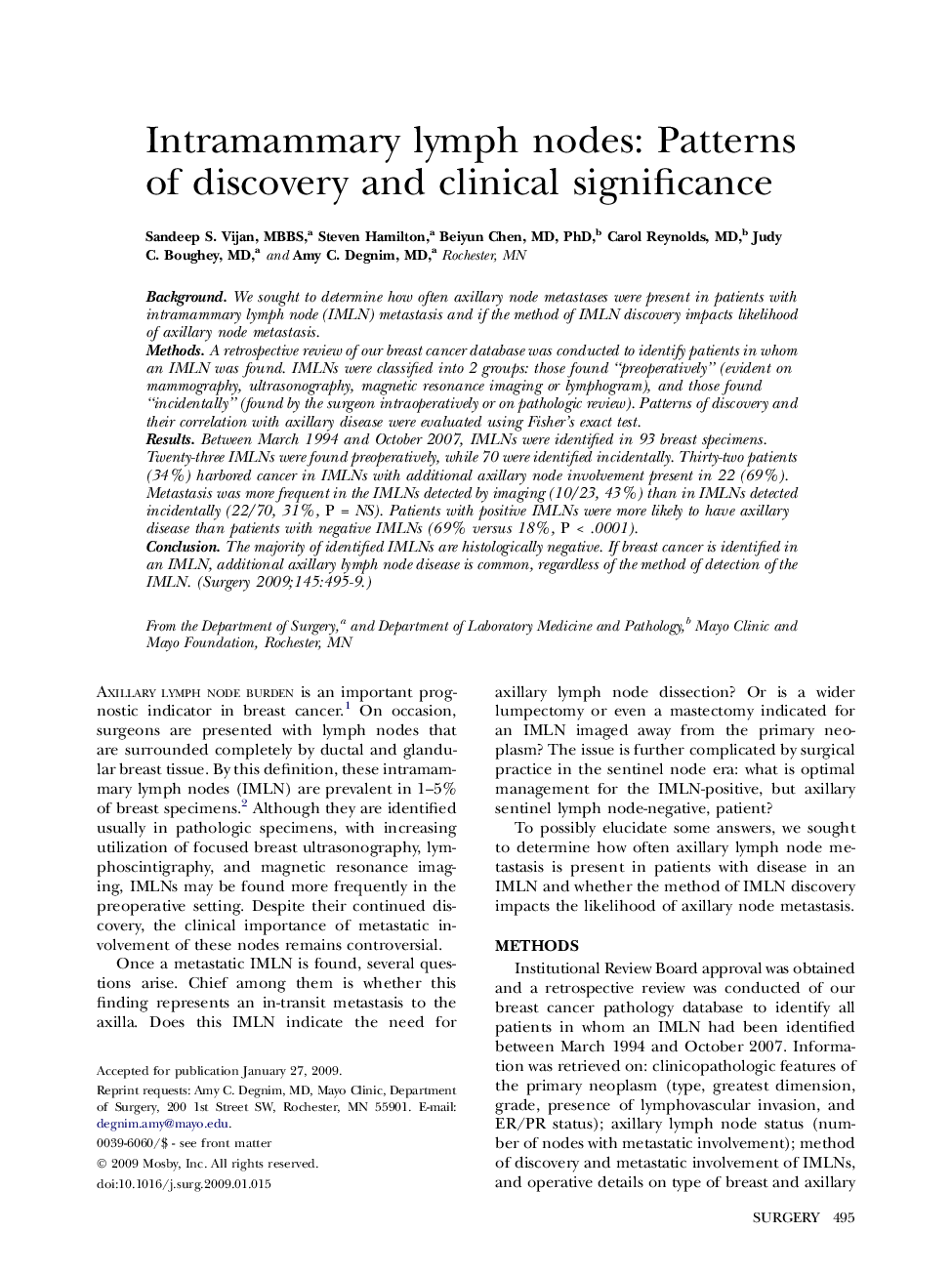| Article ID | Journal | Published Year | Pages | File Type |
|---|---|---|---|---|
| 4309075 | Surgery | 2009 | 5 Pages |
BackgroundWe sought to determine how often axillary node metastases were present in patients with intramammary lymph node (IMLN) metastasis and if the method of IMLN discovery impacts likelihood of axillary node metastasis.MethodsA retrospective review of our breast cancer database was conducted to identify patients in whom an IMLN was found. IMLNs were classified into 2 groups: those found “preoperatively” (evident on mammography, ultrasonography, magnetic resonance imaging or lymphogram), and those found “incidentally” (found by the surgeon intraoperatively or on pathologic review). Patterns of discovery and their correlation with axillary disease were evaluated using Fisher's exact test.ResultsBetween March 1994 and October 2007, IMLNs were identified in 93 breast specimens. Twenty-three IMLNs were found preoperatively, while 70 were identified incidentally. Thirty-two patients (34%) harbored cancer in IMLNs with additional axillary node involvement present in 22 (69%). Metastasis was more frequent in the IMLNs detected by imaging (10/23, 43%) than in IMLNs detected incidentally (22/70, 31%, P = NS). Patients with positive IMLNs were more likely to have axillary disease than patients with negative IMLNs (69% versus 18%, P < .0001).ConclusionThe majority of identified IMLNs are histologically negative. If breast cancer is identified in an IMLN, additional axillary lymph node disease is common, regardless of the method of detection of the IMLN.
